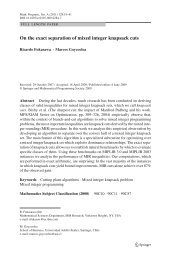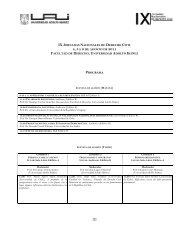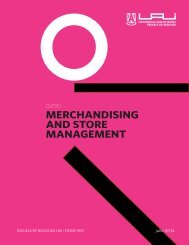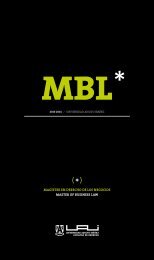Sample Average Approximation Method for Chance Constrained ...
Sample Average Approximation Method for Chance Constrained ...
Sample Average Approximation Method for Chance Constrained ...
- No tags were found...
Create successful ePaper yourself
Turn your PDF publications into a flip-book with our unique Google optimized e-Paper software.
f(¯x) ≥ ϑ ∗ . Also f(ˆx N ) → f(¯x) w.p.1, and hencelim infN→∞ˆϑ N ≥ ϑ ∗ w.p.1. (10)It follows from (9) and (10) that ˆϑ N → ϑ ∗ w.p.1. It also follows that the point ¯x is anoptimal solution of the true problem and then we have D(ŜN, S) → 0 w.p.1.Condition (A) is essential <strong>for</strong> the consistency of ˆϑ N and ŜN. Think, <strong>for</strong> example,about a situation where the constraint p(x) ≤ α defines just one feasible point ¯x suchthat p(¯x) = α. Then arbitrary small changes in the constraint ˆp N (x) ≤ α may result inthat the feasible set of the corresponding SAA problem becomes empty. Note also thatcondition (A) was not used in the proof of inequality (10). Verification of condition (A)can be done by ad hoc methods.Suppose now that γ > α. Then by Proposition 2.2 we may expect that with increaseof the sample size N, an optimal solution of the SAA problem will approach an optimalsolution of the true problem with the significance level γ rather than α. Of course,increasing the significance level leads to enlarging the feasible set of the true problem,which in turn may result in decreasing of the optimal value of the true problem. For apoint ¯x ∈ X we have that ˆp N (¯x) ≤ γ, i.e., ¯x is a feasible point of the SAA problem, iff12
















